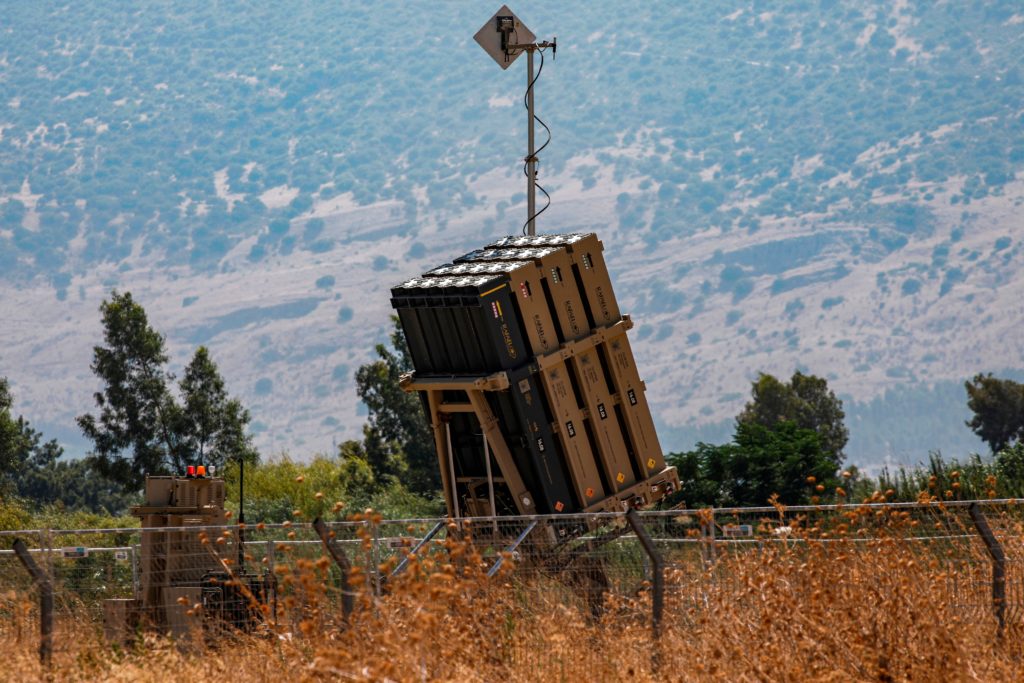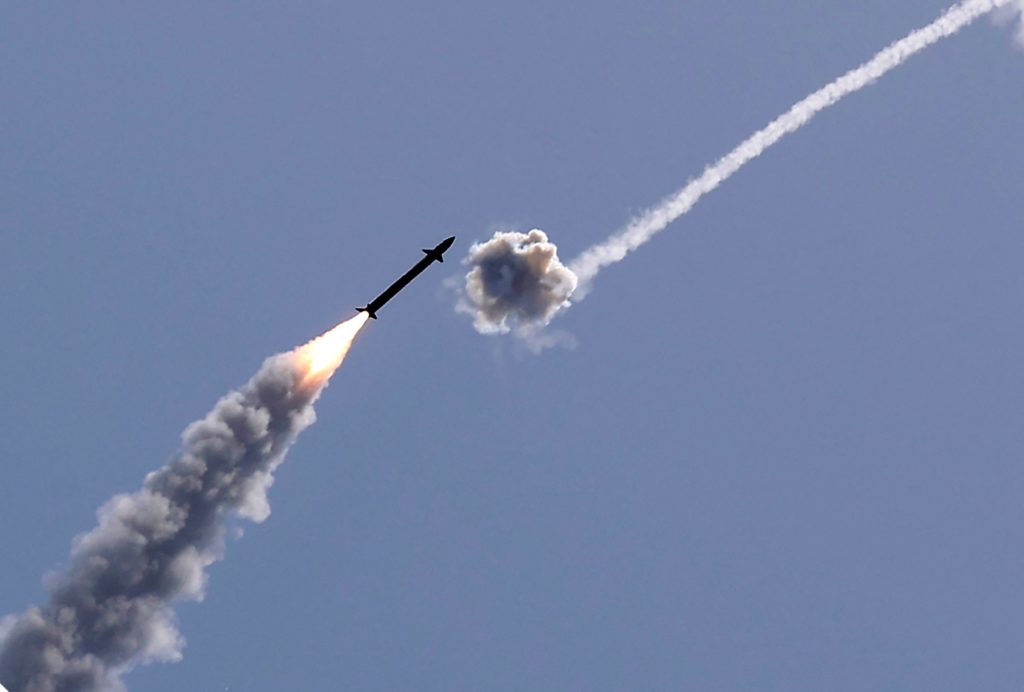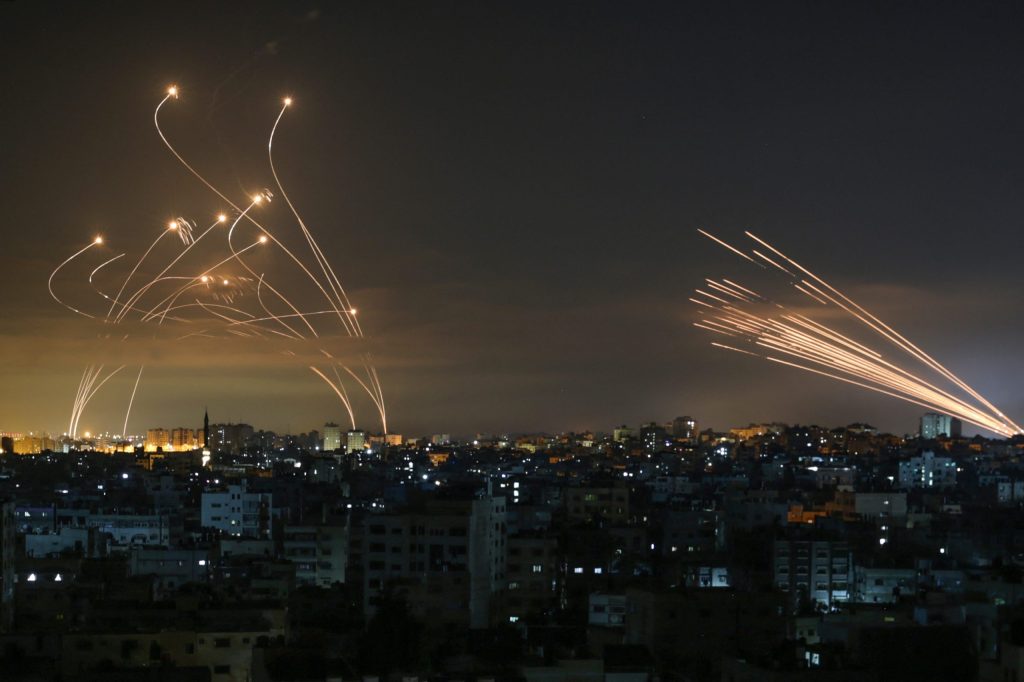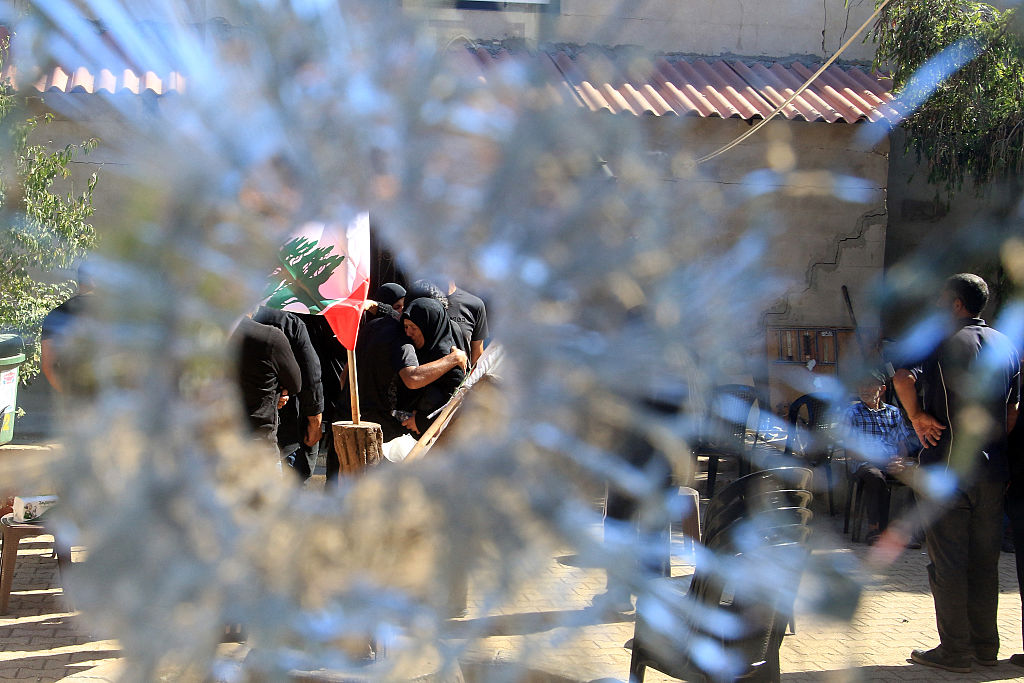A dramatic photo from the Gaza strip taken in the early hours of Friday morning looks like something out of a Marvel film. On the right, rockets fly from Gaza. The gentle trajectory of their parabolic curves shouldn’t fool anyone: these are unguided explosives traveling at hundreds of miles an hour towards an Israeli town. On the left, each one snaking a unique, winding path, interceptors from Israel’s Iron Dome anti-rocket system shoot up to meet the missiles.
In 2001, when Hamas started firing rockets from Gaza into Israel (and, at that time, the still-extant Israeli settlements in Gaza), the terrorist organization introduced a new weapon that would change the strategic picture of the Israeli-Palestinian conflict. Initially small and ultra short range, the rockets improved as Palestinian terror groups became more expert at designing and building them. After Israel withdrew settlements from Gaza in 2005, rocket fire became a serious threat to a large and ever-growing chunk of the country.
Iron Dome, Israel’s purely defensive anti-rocket system, significantly neutralized this threat. When Amir Peretz, then Israel’s former defense minister, commissioned the Iron Dome system in 2007, it was seen as something of a pipe dream. After all, anti-missile systems were one of those military fads that never work. There’s even a joke about it in the TV series The West Wing. Surely Iron Dome would be another expensive failure? Peretz was widely derided as a failure in office, but his decision to back Iron Dome salvaged his reputation.
But the system was also backed by Barack Obama and Congress, who put more than a billion dollars towards its development and construction. Without that backing, the program may never have succeeded.
The Iron Dome system consists of two parts: radar and interceptors. The extremely accurate radar system detects when a rocket is launched towards Israel and then uses probabilistic algorithms to calculate where it’s likely to fall. If the system detects that a rocket is heading for the sea or an empty field, it ignores it.
If, though, a rocket is hurtling towards a populated area, then Iron Dome swings into action. Launchers fire Tamir interceptors at the rocket, themselves small missiles that can change direction in mid-air to chase the projectile down. The interceptors try to hit the incoming rocket and explode it in the air, leaving just debris to fall to the ground. Interceptors that miss self-destruct harmlessly.
The whole system is portable; the radar, launchers and control centers can be quickly moved around, so the IDF can easily shift a few Iron Dome batteries to the Sinai desert or Lebanese border when there’s trouble brewing.

Iron Dome intercepted its first rocket, a Grad heading for the city of Ashkelon, in April 2011. Since then it’s shot down thousands of rockets fired into Israel by Hamas, Islamic Jihad and other groups. The system isn’t perfect, and sometimes a rocket slips through the detection or the interceptors miss. But much more often than not, incoming rockets are literally blown out of the sky.
When it became operational, the system fundamentally changed the strategic situation for Israel and Hamas-run Gaza. Under the Dome, Israelis are able to tolerate the occasional Hamas rocket with very little loss of life. That means, ironically, that Hamas found it easier to build up a sizable rocket arsenal without significant interference from Israel. There hasn’t been significant military conflict between Israel and Hamas since 2014. Rockets stopped being an urgent problem for Israel. Every now and then Hamas or another group would launch a barrage, but the anti-missile system would clean most of it up.
This time, though, Palestinian terror groups seem to have figured out how to break a crack in the Dome. In a change of tactics, Hamas and Islamic Jihad have been launching enormous volleys of rockets in a very short time, more than a hundred launches a minute targeting multiple cities in an attempt to confuse the system’s radar and overwhelm its interceptors.
Certainly, this tactic seems at first glance to be effective. Towns across Israel have suffered direct hits from rockets, killing and wounding Israelis. In response, Israel has been striking Hamas leaders and infrastructure in Gaza.

Reports suggest, though, that it is still stopping about 90 percent of rockets that were aimed at populated areas, which is roughly its normal success rate. Hamas’s apparent success might just be the law of large numbers: 10 percent of several hundred rockets is still a lot of destruction.
Iron Dome is just one of Israel’s anti-rocket systems. The Arrow system, developed jointly with the US, is designed to destroy much bigger and faster weapons like nuclear-tipped Intercontinental Ballistic Missiles, intercepting them when they’re so high up they’re technically in space. It may even be able to shoot down satellites, something that’s never been attempted by anyone. On the other extreme, the recently deployed Iron Beam system uses lasers to shoot down threats that are too small for Iron Dome, like mortar shells and drones.
The other part of Israel’s rocket defense is the Red Alert system, which sounds a siren in towns where rockets are heading. When this happens, people have a few seconds to head to a bomb shelter or stairwell, or crouch behind a wall. Most of the time, they’ll hear a boom in the sky as Iron Dome does its job. But sometimes the boom is much lower, much closer as a rocket gets through. Iron Dome or no Iron Dome, it’s better not to take any chances.
This article was originally published on The Spectator’s UK website.

























